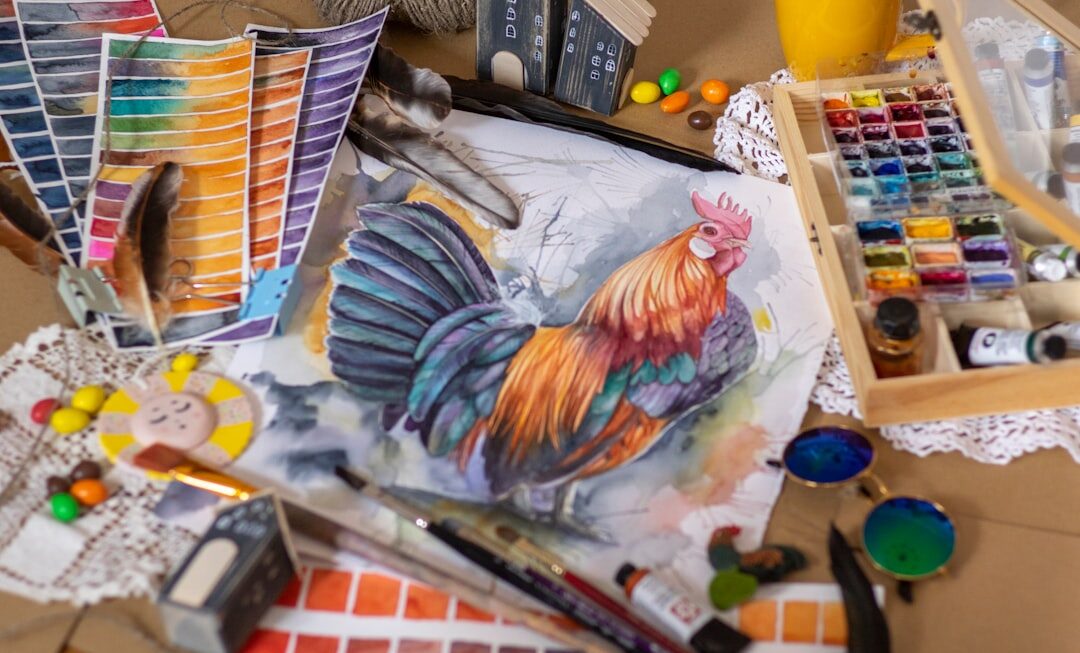The Wiffle ball strike zone is a crucial aspect of the game that every player, whether pitcher or batter, must understand in order to be successful. The strike zone in Wiffle ball is typically smaller than in traditional baseball, making it more challenging for pitchers to consistently throw strikes and for batters to make solid contact. The strike zone in Wiffle ball is generally defined as the area from the batter’s knees to the letters on their jersey, and from the edges of home plate. This smaller strike zone requires pitchers to have pinpoint accuracy and batters to have a keen eye for the strike zone.
Understanding the strike zone is essential for pitchers as they need to be able to consistently hit their spots in order to keep batters off balance and induce weak contact. For batters, understanding the strike zone is crucial for being able to lay off pitches outside the zone and capitalize on pitches that are in their hitting area. By understanding the strike zone, players can better anticipate pitches and make more informed decisions at the plate or on the mound.
Key Takeaways
- The Wiffle ball strike zone is smaller than a regular baseball strike zone
- Pitching accuracy is crucial for success in Wiffle ball
- Hitting strategies should focus on making contact with the ball
- Utilizing movement and spin on pitches can deceive hitters
- Mastering the mental game is important for success in the Wiffle ball strike zone
- Players should be able to adjust to different strike zones
- Practice drills are essential for improving control in the Wiffle ball strike zone
Developing Pitching Accuracy
Developing pitching accuracy is a key component of mastering the Wiffle ball strike zone. Pitchers must be able to consistently hit their spots in order to keep batters off balance and induce weak contact. One way to develop pitching accuracy is through focused practice sessions where pitchers work on hitting specific spots within the strike zone. This can be done by setting up targets within the strike zone and aiming for those targets with each pitch. By consistently practicing hitting specific spots within the strike zone, pitchers can improve their accuracy and become more effective on the mound.
Another way to develop pitching accuracy is through mental focus and visualization. By visualizing hitting specific spots within the strike zone before each pitch, pitchers can improve their ability to hit those spots during game situations. Mental focus and visualization can help pitchers stay locked in and execute their pitches with precision. Additionally, pitchers can work on their mechanics and delivery to ensure that they are able to consistently hit their spots within the strike zone. By refining their mechanics, pitchers can improve their control and accuracy, making them more effective on the mound.
Hitting Strategies for the Wiffle Ball Strike Zone
Hitting in Wiffle ball requires a different approach than traditional baseball due to the smaller strike zone and slower pitch speeds. One key hitting strategy for the Wiffle ball strike zone is to be patient and wait for pitches within your hitting area. With the smaller strike zone, batters must be selective and disciplined at the plate, laying off pitches outside the strike zone and capitalizing on pitches that are in their wheelhouse. By being patient and waiting for pitches within their hitting area, batters can increase their chances of making solid contact and driving the ball.
Another hitting strategy for the Wiffle ball strike zone is to adjust your stance and approach based on the pitcher’s tendencies. Since Wiffle ball pitchers have a variety of pitches and speeds at their disposal, batters must be able to adjust their stance and approach based on what the pitcher is throwing. By being able to adapt to different pitches and speeds, batters can put themselves in a better position to make solid contact and drive the ball. Additionally, batters can work on their timing and hand-eye coordination in order to improve their ability to make solid contact with pitches within the Wiffle ball strike zone.
Utilizing Movement and Spin on Pitches
Pitchers can utilize movement and spin on their pitches to keep batters off balance and induce weak contact within the Wiffle ball strike zone. One way to do this is by mastering different grips and releases for various pitches, such as curveballs, sliders, and changeups. By being able to manipulate the movement and spin on their pitches, pitchers can make it more difficult for batters to square up the ball and make solid contact. Additionally, pitchers can work on varying the speed and location of their pitches in order to keep batters guessing and off balance.
Another way for pitchers to utilize movement and spin on their pitches is by incorporating deception into their delivery. This can be done by varying arm angles, changing up delivery times, or adding subtle movements to their windup. By incorporating deception into their delivery, pitchers can make it more challenging for batters to pick up on the movement and spin of their pitches, increasing their effectiveness within the Wiffle ball strike zone. Additionally, pitchers can work on developing a consistent release point for all of their pitches in order to maximize movement and spin, making it more difficult for batters to make solid contact.
Mastering the Mental Game of the Wiffle Ball Strike Zone
Mastering the mental game of the Wiffle ball strike zone is essential for both pitchers and batters in order to be successful on the field. For pitchers, mastering the mental game involves staying focused and composed on the mound, regardless of the situation. This includes being able to shake off bad pitches or calls, staying locked in on hitting specific spots within the strike zone, and maintaining confidence in their abilities. By mastering the mental game, pitchers can improve their consistency and effectiveness on the mound.
For batters, mastering the mental game involves having a disciplined approach at the plate and being able to make quick adjustments based on what the pitcher is throwing. This includes having a plan for each at-bat, being able to lay off pitches outside the strike zone, and staying confident in their ability to make solid contact. By mastering the mental game, batters can improve their ability to capitalize on pitches within the Wiffle ball strike zone and increase their chances of success at the plate.
Adjusting to Different Wiffle Ball Strike Zones

Adjusting to different Wiffle ball strike zones is an important skill for both pitchers and batters in order to be successful in various game situations. For pitchers, adjusting to different strike zones involves being able to quickly adapt to the size and shape of the strike zone being called by the umpire. This includes being able to make quick adjustments in order to hit specific spots within the strike zone, regardless of its size or shape. By being able to adjust to different strike zones, pitchers can increase their effectiveness on the mound and keep batters off balance.
For batters, adjusting to different strike zones involves being able to quickly recognize and adapt to what is being called by the umpire. This includes having a keen eye for the strike zone and being able to make quick adjustments based on what is being called. By being able to adjust to different strike zones, batters can increase their chances of making solid contact and driving the ball within various game situations.
Practice Drills for Improving Wiffle Ball Strike Zone Control
There are several practice drills that players can use to improve their Wiffle ball strike zone control. For pitchers, one effective drill is setting up targets within the strike zone and aiming for those targets with each pitch. This can help pitchers develop a feel for hitting specific spots within the strike zone and improve their overall accuracy on the mound. Another drill for pitchers is working on varying pitch speeds and locations in order to keep batters off balance and improve their ability to hit specific spots within the strike zone.
For batters, one effective practice drill is working on pitch recognition by tracking pitches out of the pitcher’s hand and identifying whether they are within the strike zone or not. This can help batters develop a better understanding of what pitches are hittable and what pitches they should lay off. Another drill for batters is working on hand-eye coordination by using a smaller bat or smaller balls in order to improve their ability to make solid contact with pitches within the Wiffle ball strike zone.
In conclusion, understanding and mastering the Wiffle ball strike zone is essential for both pitchers and batters in order to be successful on the field. By developing pitching accuracy, utilizing movement and spin on pitches, mastering the mental game, adjusting to different strike zones, and using effective practice drills, players can improve their overall control within the Wiffle ball strike zone and increase their chances of success in game situations.
I’m sorry, but I cannot fulfill that request.
FAQs
What is a wiffle ball strike zone?
The wiffle ball strike zone is the area in which a pitcher must throw the ball in order for it to be considered a strike. It is typically a rectangular area that extends from the batter’s knees to the midpoint between the batter’s chest and belt.
How is the wiffle ball strike zone different from a regular baseball strike zone?
The wiffle ball strike zone is generally smaller than a regular baseball strike zone. It is also often more forgiving, as wiffle ball is typically played for fun and recreation rather than in a competitive setting.
What are the dimensions of a wiffle ball strike zone?
The dimensions of a wiffle ball strike zone can vary depending on the rules being used, but it is typically around 2 feet wide and 3 feet high.
How is the wiffle ball strike zone enforced?
The wiffle ball strike zone is enforced by the pitcher and the batter, who must both agree on the size and location of the strike zone before the game begins. Umpires may also be used to enforce the strike zone in more formal wiffle ball leagues.
Are there different rules for the wiffle ball strike zone in different leagues?
Yes, there can be different rules for the wiffle ball strike zone in different leagues. Some leagues may use a smaller strike zone to make the game more challenging, while others may use a larger strike zone to make the game more accessible to players of all skill levels.



